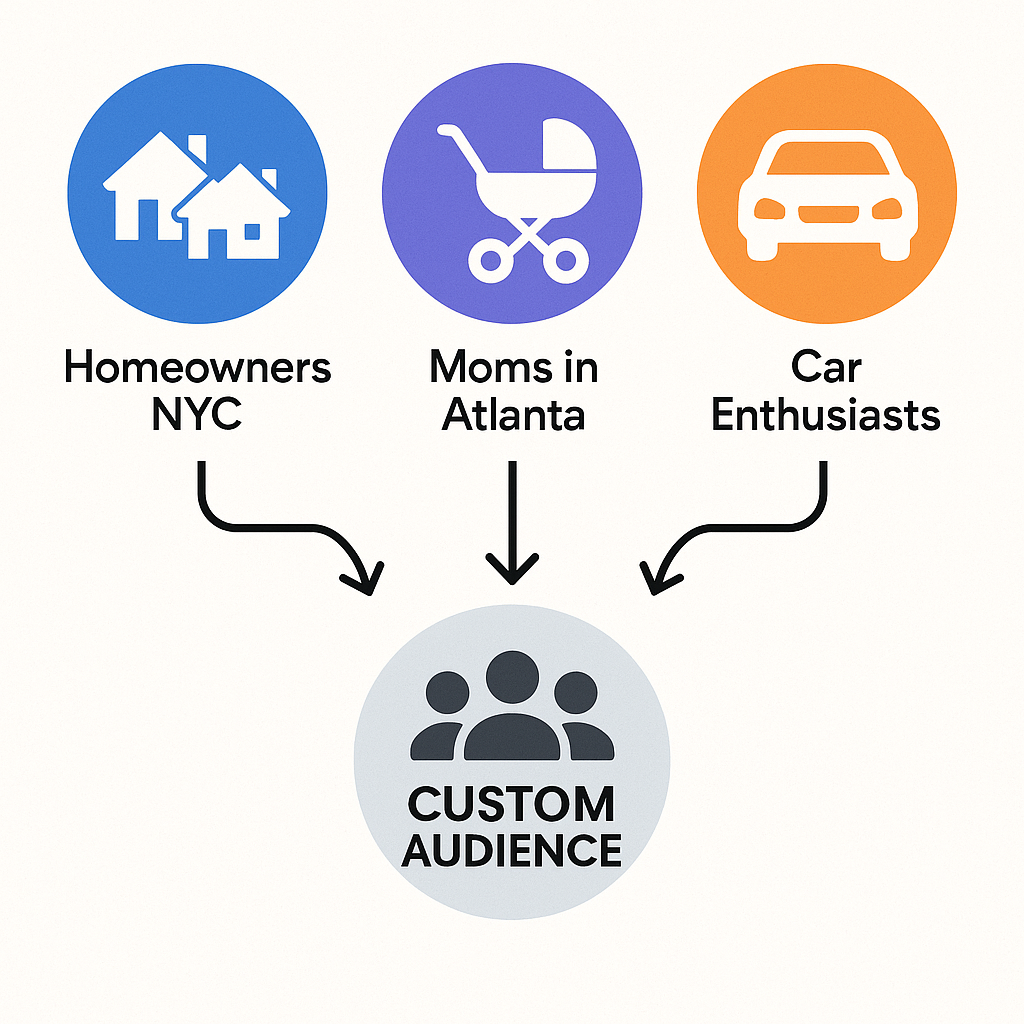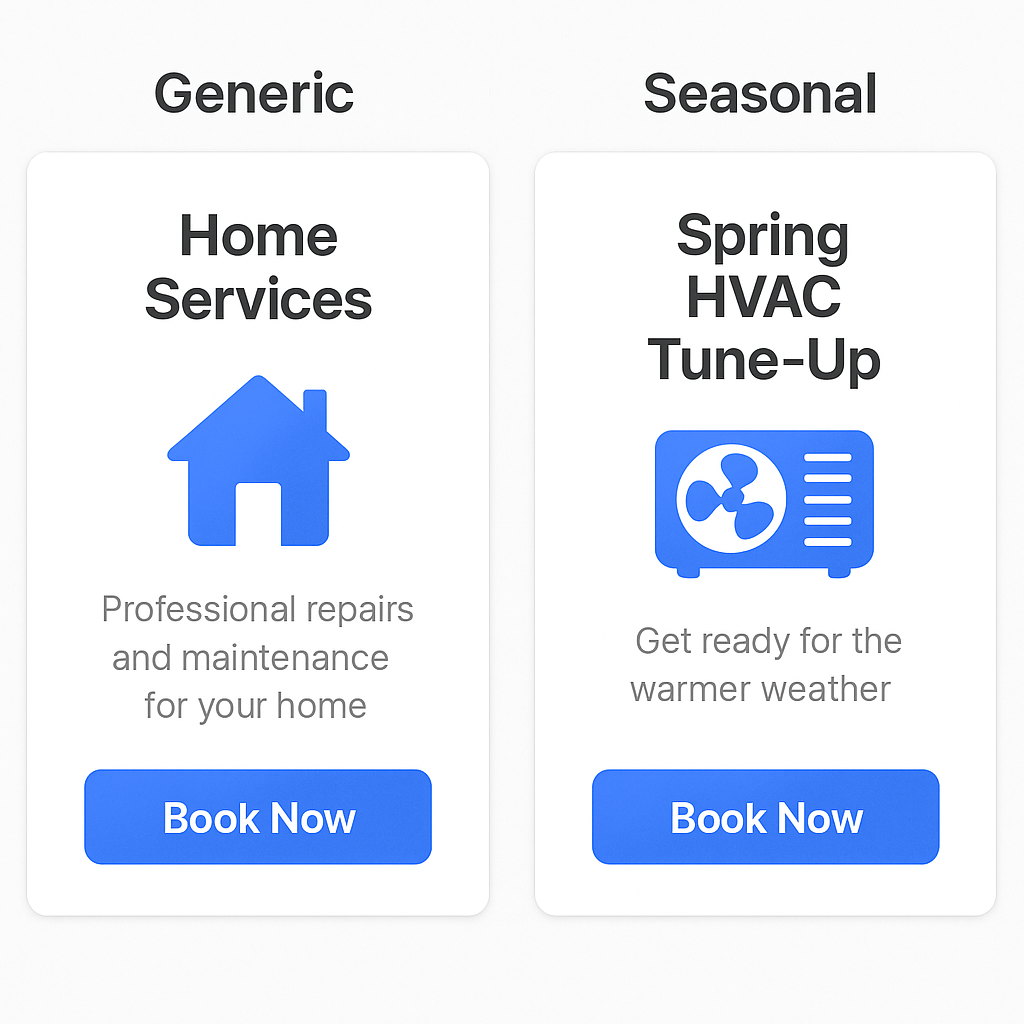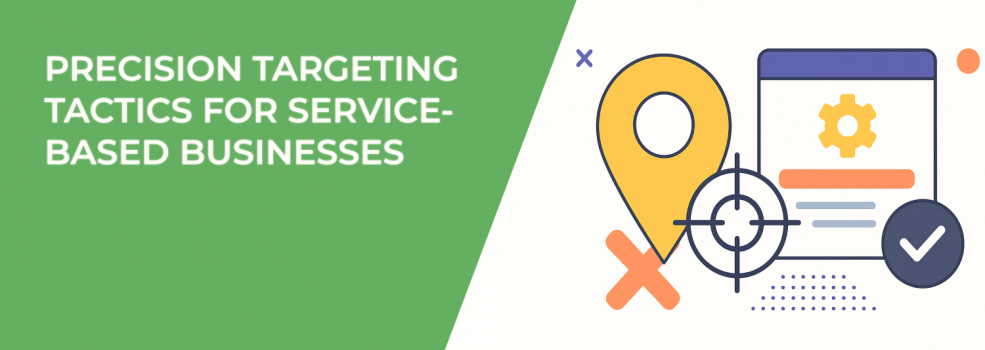Selling services is different. You’re not trying to move volume — you’re trying to earn trust.
That’s why your targeting strategy shouldn’t look anything like an e-commerce brand’s.
Let’s walk through targeting tactics that actually make sense for service-based businesses — whether you book appointments, offer consultations, or manage client relationships.
1. Prioritize Locality + Urgency Over Broad Interest Buckets
With services, proximity and timing often matter more than broad demographics.
Instead of chasing generic interest audiences (like “small business owner” or “home improvement”), build targeting around real-world conditions.

-
Radius targeting around your service zones or office location.
-
Zip code layering, especially for high-intent zip clusters or premium neighborhoods.
-
Urgency signals, like ads targeting people who recently searched for competitors or landed on “Contact” pages but didn’t act.
These tweaks keep your ads in front of the people most likely to convert — the ones near you, actively shopping, and under a time constraint.
If you’ve seen delivery warnings like “Ad Set May Get Zero,” this troubleshooting guide shows how to avoid stalling small but high-value audiences.
2. Create Separate Targeting for Repeat vs First-Time Bookers
Too many service providers run the same ads to everyone — forgetting that repeat clients and first-timers behave completely differently.
Here’s how to fix that:
-
Build a custom audience of past clients using offline conversions or CRM data.
-
Create a lookalike audience from your highest-value repeat clients.
-
Run exclusion rules to separate “cold” leads from those who’ve already booked or engaged.
Then tailor the messaging. First-time clients need trust-builders (like testimonials or walkthroughs), while repeat clients respond to efficiency, loyalty perks, or rebooking nudges.
Need help identifying high-quality audience traits? This guide breaks down how to segment intent-based custom audiences properly.
3. Tap Into Community Behavior With Group-Based Targeting
People trust people — especially when they’re sharing service recommendations in groups.

Instead of just targeting interest categories like “new moms” or “business owners,” target:
-
Facebook group-based audiences using third-party tools.
-
Engaged commenters from specific niche communities.
-
Users connected to hyper-local groups like “Parents of Atlanta” or “Homeowners in San Diego.”
This approach gives you access to high-context, high-trust audiences that behave more like referrals than cold traffic.
You don’t have to interrupt people with sales-y ads when you’re already showing up in the flow of their decision-making communities.
You can read how to target Facebook groups for more details.
4. Build Retargeting That Reacts to Service Research Behavior
Someone who visits your "About Us" page isn’t at the same level of interest as someone who starts filling out your booking form.
Here’s how to segment retargeting by real signals:
-
Page-level retargeting (e.g., service pricing vs general homepage).
-
Scroll depth tracking (only retarget visitors who scrolled 75%+ of your key landing page).
-
Pixel-based segmentation by form start or button click, even if no submission occurred.
Then design creative for each layer.
Not everyone needs to be convinced — some just need a calendar link or a nudge.
For more on mapping these segments to smarter remarketing flows, read this breakdown on Facebook lead gen segmentation.
5. Use Time-Sensitive Creative That Mirrors Service Demand Cycles
Every service has demand peaks. For accountants, it's tax season. For salons, it’s weddings and holidays. For home services, it’s weather-driven. So stop running the same ad year-round.

Instead:
-
Run seasonal creative that addresses in-the-moment pain points.
-
Align targeting with calendar triggers — e.g., “Tax help before April 15” or “Book before school starts.”
-
Rotate offers or visuals monthly to reflect what your audience is actually thinking about now.
Static campaigns miss dynamic behavior — especially when urgency is part of the decision.
Looking for visual inspiration? See how others refresh their ads with AI-generated seasonal creative.
6. Segment by Lead Quality — Not Just Lead Source
Not all leads are created equal — and you probably know that from experience.
What separates high-quality leads in services:
-
They schedule quickly, not just “ask a question.”
-
They show up and buy again.
-
They often consume more than one touchpoint before converting.
To lean into quality, use:
-
CRM-based lookalikes from top clients only.
-
Custom audiences segmented by lead scoring (high-intent vs unqualified).
-
Exclusions to remove repeat “window shoppers” or low-LTV segments.
This isn’t about getting more leads — it’s about getting the ones that don’t ghost you.
Want to go deeper? Check out this article on how B2B service providers optimize for conversion-ready leads.
Final Thoughts
When you’re selling services, you don’t want 10,000 clicks. You want 10 people ready to act — book, call, show up, pay.
The best targeting doesn’t widen the top. It sharpens the middle.
Skip the fluff. Focus on behavior, timing, and real buying patterns. And your next campaign won’t just look better — it’ll close better.

